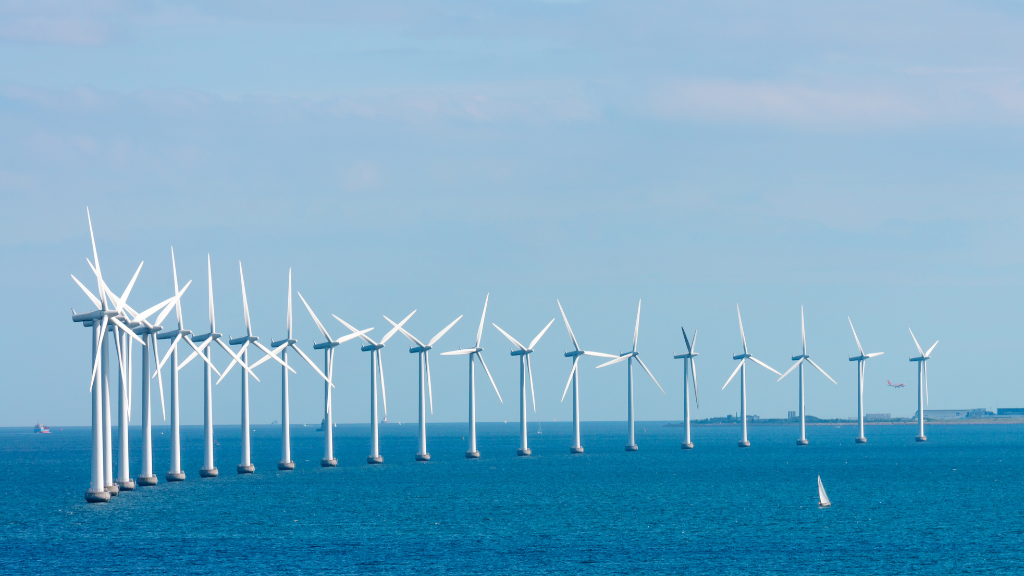In the renewable energy industry, wind power plays an important part in working towards a cleaner, more sustainable future. With each passing year, advancements in technology and strategic shifts in global markets propel the wind industry forward, shaping a dynamic and promising trajectory. Despite facing challenges and setbacks, the growth and potential of wind turbine installations highlight their pivotal role in the global energy transition.
Advancements in turbine technology
The evolution of wind power is driven by larger, more efficient turbines like Vestas’ 15 groundbreaking 15 MW model tested in 2023[1]. This milestone solidifies Vestas’ lead in wind turbine technology. With certification, this cutting-edge turbine is ready to contribute to a Danish wind farm under construction this year[2]. These towering structures, rivalling landmarks like the Eiffel Tower, highlight the industry’s dedication to innovation.
Harnessing offshore wind potential
Offshore wind farms, in particular, hold immense promise in harnessing the powerful and consistent winds that blow along coastlines. With 40% of the global population living within 60 miles of the ocean, offshore wind presents a huge opportunity to clean up the electricity supply worldwide[3]. However, recent months have seen delays and cancellations in projects around the globe, driven by soaring costs and supply chain disruptions.
The US offshore wind market
While the US trails established markets like the UK and Denmark, it’s advancing in offshore wind development[4]. Dominion Energy’s investment in US-built infrastructure highlights a growing commitment to enhancing offshore turbine installation capabilities[5]. Despite challenges, the US offshore wind market shows promise, with new projects and significant investments driving growth.
Global market outlook
The Global Wind Energy Council’s 2023 report highlights the remarkable growth of wind energy, with 2022 marking the third-best year ever for new capacity additions[6]. A staggering 78 GW of new capacity was added globally[7], pushing the total installed capacity to 906 GW[8]. This growth represents a 9% increase year-on-year, demonstrating the accelerating pace of wind energy adoption worldwide[9].
Technological innovation
Technological innovation drives wind power evolution, with turbines growing larger and undergoing design enhancements for efficiency and scalability. Notably, China leads this surge, boasting an average onshore turbine rating of 4.7 MW in 2022, surpassing western markets[10]. What’s more, floating offshore wind turbines address deep-water locations, with ongoing global pilot projects. Standardisation and platform design advancements promise cost reduction and wider offshore wind installation reach.
Challenges and opportunities
Looking ahead, the future of wind turbine installations holds excitement and challenges. Economic uncertainties, supply chain disruptions, and policy dynamics will shape the industry. Yet, with ongoing innovation, strategic investments, and global collaboration, wind power remains pivotal in transitioning to a sustainable energy future. Despite current challenges, wind turbine installations will drive the world towards a cleaner, greener tomorrow.
Footnotes
- https://www.technologyreview.com/2024/01/10/1086354/whats-next-for-offshore-wind/
- ibid.
- ibid.
- ibid.
- ibid.
- https://gwec.net/globalwindreport2023/
- ibid.
- ibid.
- ibid.
- https://www.woodmac.com/news/opinion/goldwind-captures-the-top-spot-for-global-wind-turbine-supply/


